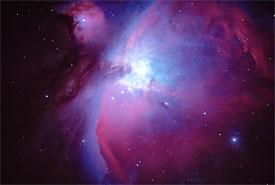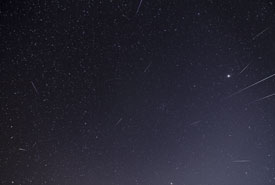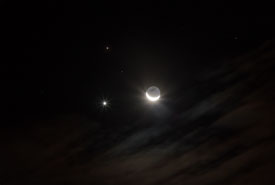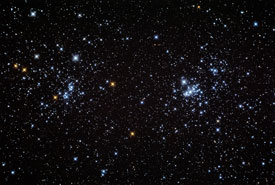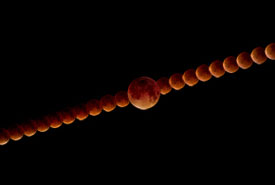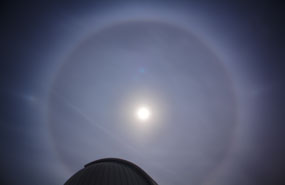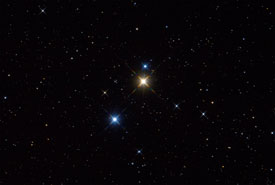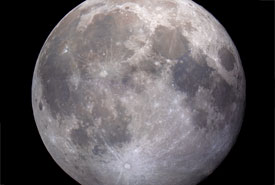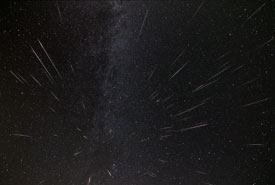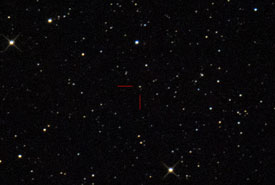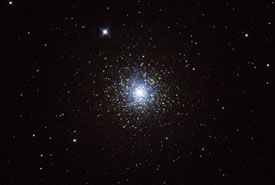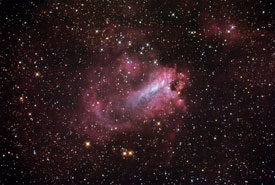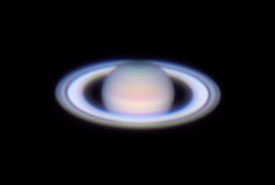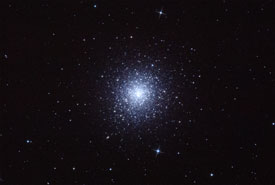
Recent
The Massive Orion Nebula
I captured this shot of the Orion Nebula, the closest star forming region to the Solar System. Residing at 1,500 light years distant, the nebula is 25 light years in diameter. I shot this at Frosty Drew Observatory in Charlestown, Rhode Island, USA while showing off differences between the camera and visible observation.
- By: Scott MacNeill
The Quadrantid Meteor Shower Radiant Point
This is a stunning composite shot I made showcasing the Quadrantid Meteor Shower radiant point on January 4, 2016. The Quadrantid shower has a very short peak period, lasting only about 1.5 hours. 2016 placed New England as the best place to catch sight of the shower peak. The 30% crescent Moon made it a bit difficult to capture dimmer meteors, though I was able to capture 11 meteors over a period of three hours. I captured these shots at Frosty Drew Observatory in Charlestown, Rhode Island, USA.
- By: Scott MacNeill
Venus, Mars, and the Crescent Moon in Conjunction
I captured this fabulous view of Mars, Venus, and the 15% waning crescent Moon in conjunction. Autumn 2015 brought dozens of fabulous conjunctions to the morning pre-dawn sky involving Jupiter, Mars, Venus and the Moon. I captured these shots at Frosty Drew Observatory in Charlestown, Rhode Island, USA.
- By: Scott MacNeill
The Perseus Double Cluster
Here is a stunning shot I captured of the Perseus Double Cluster on October 17, 2016. The Perseus Double Cluster is comprised of two open star clusters that share a interacting with each other. Surrounded by a huge halo of stars, both clusters reside at 7,500 light years distant. I captured these shots at Frosty Drew Observatory in Charlestown, Rhode Island, USA.
- By: Scott MacNeill
Super Harvest Total Lunar Eclipse
On September 27, 2015 the final total lunar eclipse of the current lunar tetrad occurred. Though weather prevented viewing of the first three total lunar eclipses of the tetrad, we had spectacular views of this final eclipse. This is a composite of over 100 individual photos I captured on 120 second intervals effectively archiving the entire eclipse. I captured these shots at Frosty Drew Observatory in Charlestown, Rhode Island, USA.
- By: Scott MacNeill
Lunar Halo over Frosty Drew Observatory
I captured this view of a stunning 22º Lunar Halo over the Frosty Drew Observatory on September 26, 2015, the night preceding the Supermoon Eclipse. With an abundance of moisture over New England, we frequently experience 22º halos in autumn and winter. I captured these shots at Frosty Drew Observatory in Charlestown, Rhode Island, USA.
- By: Scott MacNeill
31 Cygni: Part of a Stunning Optical Triple
A strikingly beautiful captured I snapped of 31 Cygni at Frosty Drew Observatory in Charlestown, Rhode Island, USA. 31 Cygni is an optical triple star system. Being that is is optical only, the group is not related or iteracting with each other. 31 Cygni is a favorite of multiple star system watchers as the colors and separation are both easily visible.
- By: Scott MacNeill
August 2015 SuperMoon
A stunning view of the August 2015 Supermoon I captured at Frosty Drew Observatory in Charlestown, Rhode Island, USA. Though the actual yearly supermoon occurs on September 27, 2015. The August full Moon was also considered a supermoon.
- By: Scott MacNeill
Perseid Meteor Shower 2015 Radiant Point
A fanstastic composite photo I captured of the 2015 Persied Meteor Shower radiant point. I shot this over three nights (August 13-15, 2015) from midnight to 5:00 a.m. each night at Frosty Drew Observatory in Charlestown, Rhode Island, USA. This composite features 57 total Perseid meteors, the Andromeda Galaxy, Perseus Double Cluster, NGC 752, Triangulum Galaxy, and constellations Cassiopeia, Perseus, Cepheus, Andromeda, Pegasus, Aries, Lacerta, Triangulum, and Pisces.
- By: Scott MacNeill
Pluto on Pluto Flyby Day
Here is a shot I snapped of Pluto in the early hours of July 14, 2015, the same day that NASA New Horizons flew past Pluto at its closest point of 7,750 miles. I snapped this at Frosty Drew Observatory in Charlestown, Rhode Island, USA.
- By: Scott MacNeill
Messier 15 - The Pegasus Globular
Here is a shot I snapped of the Messier 15 globular cluster on June 25, 2015. M15 is found in the constellation Pegasus and is a super old cluster with an estimated age of 12 billion years old. Residing at 33,600 light years distant, M15 has a diameter of 175 light years. The central region of M15 is super bright due to the extreme density of stars potentially orbiting a super massive black hole. I snapped this at Frosty Drew Observatory in Charlestown, Rhode Island, USA.
- By: Scott MacNeill
Messier 17 - The Omega / Swan Nebula
Here is a stunning shot I captured of Messier 17 - The Omega / Swan Nebula. Messier 17 is a huge star forming nebula (H II region) residing at 5,000 light years distant with a diameter of 15 light years. Similar to the Orion Nebula, M17 has a blue reflection nebula, dark nebula, and red emissions nebula. Messier 17 is found in the constellation Sagittarius. I snapped this at Frosty Drew Observatory in Charlestown, Rhode Island, USA.
- By: Scott MacNeill
Saturn at Opposition in 2015
I snapped this shot of Saturn on the night of opposition, Saturday May 23rd, when Saturn was on the opposite side of Earth than the Sun. Saturn has been increasing its axial tilt from our point of view with the Summer Solstice (miximum tilt) occuring in May 2017. I snapped this at Frosty Drew Observatory in Charlestown, Rhode Island, USA.
- By: Scott MacNeill
Messier 13 - The Great Hercules Cluster
Here is a shot I snapped of the Messier 13 globular cluster on April 18, 2015. M13 is found in the constellation Hercules and is the most famous globular star clusters visible in the Northern Hemisphere. Being so dense and bright it is, at times, just barely naked eye visible. M96 residing at near 22,300 light years distant and has a diameter of 168 light years. I snapped this at Frosty Drew Observatory in Charlestown, Rhode Island, USA.
- By: Scott MacNeill
Messier 92 - The Other Hercules Cluster
Here is a shot I snapped of the Messier 92 globular cluster on April 19, 2015. M92 is found in the constellation Hercules and is one of the brighter globular star clusters visible in the Northern Hemisphere making it, at times, just barely naked eye visible. M96 residing at near 26,700 light years distant and has a diameter of 109 light years. I snapped this at Frosty Drew Observatory in Charlestown, Rhode Island, USA.
- By: Scott MacNeill
